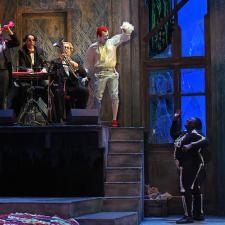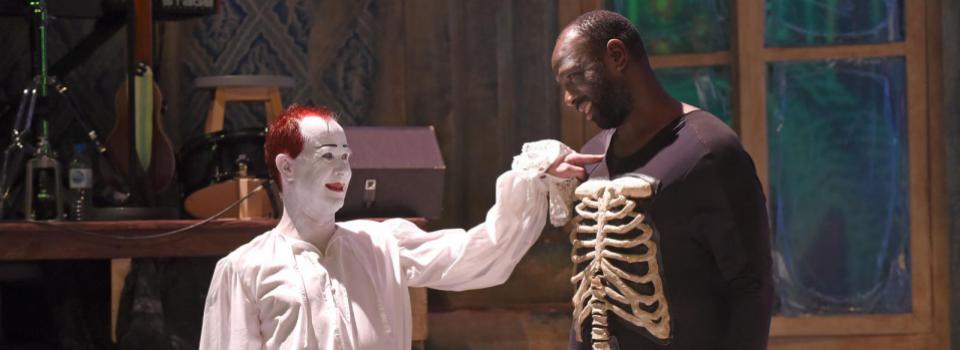
# 2 DOM JUAN OR THE FEAST WITH THE STATUE
Created by Jean Lambert-wild, Lorenzo Malaguerra and Marc Goldberg
Here, the creative team behind DOM JUAN OR THE FEAST WITH THE STATUE shares diary entries about their new show
Once we had established that we wanted to explore the myth of Dom Juan, we read Molière’s play again. It’s the version that immediately comes to mind, because many of us read it at school and it’s usually how we first discovered the character and his story. However, the closer we look, the less obvious this choice becomes, especially from a historical point of view….
First of all, Molière didn’t invent the legend of Dom Juan, far from it. It might have originated from real medieval events and characters, and it became very successful as a stage adaptation in Spanish, written by Tirso de Molina and published in 1630. That version was soon after adapted in Italy, then performed in Paris by Italian actors, from 1757, then adapted again at least twice by French dramaturgs, in 1758 and 1759, before Molière’s version which he wrote in 1765. Unlike the characters of Tartuffe or Alceste, Molière did not invent Dom Juan!
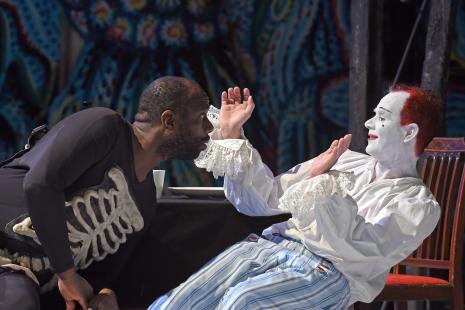
Did Molière’s text immediately become the definitive version? Far from it… When Molière’s troupe remounted the play after his death, they commissioned Thomas Corneille to write a new version in Alexandrine verse. That’s the version that is then performed for the following two centuries. More importantly, the figure of Dom Juan keeps evolving and keeps inspiring artists across generations: a play by Goldoni, an opera by Mozart, a poem by Byron, philosophical reflections by Kierkegaard… the seducer of Seville becomes a mythological figure, like Phaedra or Oedipus.
In fact, it is only in the mid-20thcentury that, in France, Molière’s version becomes the Dom Juan par excellence, with every theatre director staging their own version. Why would we do the same? We’re interested in Dom Juan as a character, or rather, in his duo with Sganarelle and his relationship to death. We have decided to regain our freedom and create our own adaptation where nothing is off-limits: whether it means borrowing from the thousand and one versions of the legend or drawing inspiration from other sources.
But we will try out everything on the stage, without preconceived expectations.
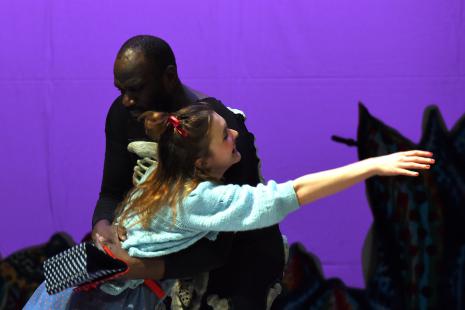
For instance, the theme of the ‘feast’ led us to Dinner for one, a famous TV sketch depicting a greedy butler who brings food to invisible guests to celebrate his elderly boss’s birthday. The sketch’s dynamics remind us of the dinner where Sganarelle gorges himself while serving his master, until the Commander interrupts the feast. We thought of including a version of this sketch as a prelude to the play but abandoned it. Its atmosphere can still be felt in the dinner scene and the long table that features in the sketch has become a key part of the stage design. This table was key for our adaptation, because unlike Molière’s Dom Juan, which includes a new set for each act, the action takes place in one single location (with multiple dimensions). We’re in Dom Juan’s palace and the banquet table takes centre stage.
Still, there is one thing that keeps bringing us back to Molière’s version: the unparalleled relationship he created between Dom Juan and Sganarelle.
Molière didn’t invent the servant character. He’s already present in Tirso de Molina’s play, where he’s called Catalinón. He only appears in the second act, but he is more than just a confidante: he’s a full character. Molière goes much further. He gives himself the part of the servant, not the seducer, and turns him into Sganarelle, a character he had been playing in other shows and for whom he had written the play Sganarelle, or the Imaginary Cuckold five years earlier. This means he’s the one saying the play’s first and last lines! And although we got used to calling the play Dom Juan, let us not forget that, apparently, the original title didn’t refer to the seducer of Seville (unlike Tirso de Molina’s) but to the last scene: The Feast with the statue.
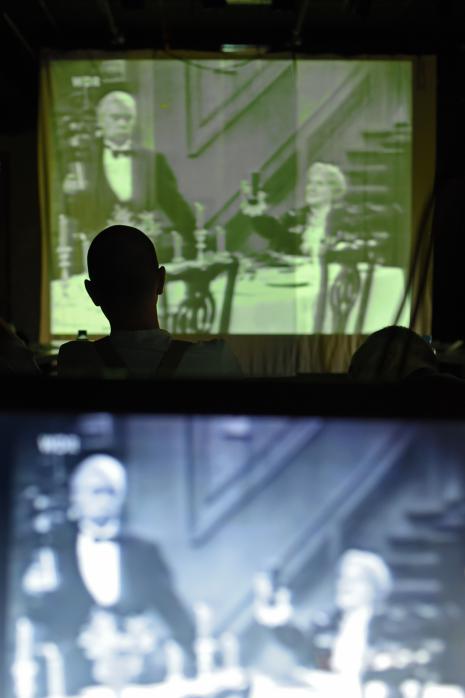
Little by little, we further Molière’s work, so to say. Molière had already simplified Tirso de Molina’s baroque narrative arc and made the action more straightforward (in Tirso de Molina’s play for instance, there are many scenes in which Dom Juan doesn’t appear). We are making this even more straightforward by focusing even closer on the two main characters and on the drama’s conclusion: the feast where Dom Juan dies. This decision affects genre scenes and peripeteia: no more Pierrot and Mathurine, Monsieur Dimanche or Dom Carlos. Donna Elvira and Charlotte reveal enough of the seducer’s manners, Dom Louis reveals the great and mean man’s scorn, and the Commander embodies the threats that weigh on the libertine. On the other hand, death will have to be lurking from the beginning.
Our adaptation grows, organically, through the rehearsal process. We test things out on the stage. The play’s framework is more focused, we have moved some scenes around, the breaks are musical pauses (an orchestra replaces the domestics). Audience members might notice a few brief interpolations (mostly Pushkin quotes)… But in the end, the spirit of our Dom Juan will stay faithful to Molière’s: the show will focus on Dom Juan and Sganarelle in the last two hours of the hero’s life. This is when their destiny is made and unmade at breakneck speed, leading them both to the mysteries of a ‘feast with the statue’.
- # 1 DOM JUAN OR THE FEAST WITH THE STATUE
- # 2 DOM JUAN OR THE FEAST WITH THE STATUE
- # 3 DOM JUAN OR THE FEAST WITH THE STATUE
- # 4 DOM JUAN OR THE FEAST WITH THE STATUE
- # 6 DOM JUAN OR THE FEAST WITH THE STATUE
- # 8 Dom Juan ot the feast with the statue
- # 9 Dom Juan or the feast of the statue
- # 10 Dom Juan or the feast of the statue
- # 11 Dom Juan or the feast of the statue

